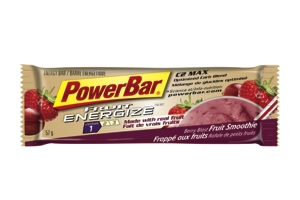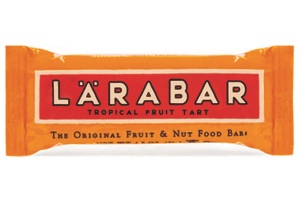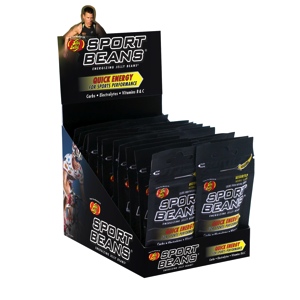
Zoom Zoom
By Treena Hein
Business Operations Food Trends Research & Development Health & Wellness Energy nutritionThe evolution of “energy-boosting” food and beverage offerings hinges on using more natural ingredients, while meeting the needs of better-educated consumers

No matter how hard we Canadians strive for balance in our lives, many of us are still tired. That’s why the “energy” category is hotter than ever, with bars, candy, one-shot drinks and more providing people with a convenient hit of power.
An increasing number of energy-boosting foods are being introduced nowadays, a trend built on consumers’  familiarity with ingredients such as caffeine, taurine and electrolytes through long exposure to energy drinks. And, as with all other food and drink categories, energy products now contain more natural ingredients than ever before.
familiarity with ingredients such as caffeine, taurine and electrolytes through long exposure to energy drinks. And, as with all other food and drink categories, energy products now contain more natural ingredients than ever before.
Focus on performance
Sport Beans energizing jelly beans from Jelly Belly Candy Company reflect both these trends. As of January 2011, fruit juices now deliver the Beans’ natural flavours and colours, with tapioca syrup and evaporated cane juice having replaced corn syrup and sugar. Sports Beans also contain electrolytes and vitamins B and C. Convenience – something that people who like energy products tend to be keen on – is delivered through offering the four non-caffeinated and two caffeinated Extreme varieties in 100-calorie, re-sealable packets.
Yet although they’re shaped like jelly beans, Sport Beans are not a candy, nor are they targeted to children, although kids involved in high-exertion sports can use them. Instead, says Tomi Holt, Jelly Belly’s director of Communications, they’re a sports performance product. A 2008 study that appeared in the International Journal of Sport Nutrition and Exercise Metabolism showed that Sport Beans performed as well as energy gels and drinks in a simulated 10K cycle race following an endurance ride.
This emphasis on proper function in the energy product category is key, says Carol Culhane. “These are performance products to help you do just that – perform,” says the food industry analyst with International Food Focus Ltd. in Toronto, a consulting firm that provides market assessment and regulatory advice. “They’re for after work when you’re heading to your workout, or for people who have health conditions and need an energy boost, or who are on a weight-loss regime and face a moment in the day when they need a convenient way to maintain calorie and nutrient intake, or for people who travel and commute a lot.” They should not, as she believes most consumers understand, be used to replace food.
However, there are some energy products on the market that are indeed meal replacements, and the difference between energy-boosting products and energy-related meal replacers has become more blurred in the last few years. Culhane notes that before Natural Health Product (NHP) regulations were passed in 2004, the energy food category was dominated by nutritional supplements and meal replacement products (bars and drinks like Ensure and Boost) that are regulated as foods and must contain specified amounts of vitamins and minerals, quality protein and a balanced source of energy (calories). Now that energy products are part of the NHP category, Culhane says they are not required to have the same high degree of nutrient balance. All this has meant an explosion of highly differentiated energy products, particularly after 2007 when it became lawful to market NHPs in food format.
Vector cereal and Vector bar from Kellogg are examples of old-school energy foods still regulated as a meal replacement and nutritional supplement respectively. While they contain many minerals and vitamins, something Culhane says can negatively impact taste and texture, Kellogg and some other companies are doing a great job to overcome this with flavour masking.
Respect for ingredients
Whether consumers choose energy products for nutritional supplementation, to replace a meal or to improve  performance – or all three – “It’s very important for consumers to read and follow the directions on the label and be aware of their own individual needs,” says Shannon Denny, head of Marketing Communications with Coca-Cola Canada. “Based on our knowledge and insights into Canadian consumers, we do believe that they are more familiar with the ingredients found in energy drinks than they were five years ago, but there is still opportunity to increase consumer understanding.” One of the Vitaminwater selections from Coca-Cola subsidiary Glacéau is called Energy, which contains caffeine plus B vitamins with a citrus flavour.
performance – or all three – “It’s very important for consumers to read and follow the directions on the label and be aware of their own individual needs,” says Shannon Denny, head of Marketing Communications with Coca-Cola Canada. “Based on our knowledge and insights into Canadian consumers, we do believe that they are more familiar with the ingredients found in energy drinks than they were five years ago, but there is still opportunity to increase consumer understanding.” One of the Vitaminwater selections from Coca-Cola subsidiary Glacéau is called Energy, which contains caffeine plus B vitamins with a citrus flavour.
“More education is required as certain ingredients are not for everyone,” agrees Brian Baker, business manager, Performance Nutrition, for Nestlé Canada, which markets Energize and Sports Powerbar selections. “Familiarity with ingredients is very important as the consumer should understand the many benefits these products provide.” Baker says PowerBar sales have rebounded from the effects of the economic downturn and that the energy bar category grew by four per cent in the latest 52 weeks, according to The Neilsen Company. “The focus of PowerBar is on offering the right combination and type of sugar,” he says, referring to a carbohydrate mix called C2 Max, which has been proven to increase carb absorption. Recent flavour additions include Creamy Citrus Fruit Smoothie and Berry Blast Fruit Smoothie.
And, as consumers become more aware of what they need, companies are sure to keep pace. “Nutrition for sports as well as nutrition in general are becoming more individualized to the person’s age and fitness activities,” says Holt. “Consumers look to energy drinks to help manage a variety of needs and we’ve developed the AMP Energy portfolio to address them,” adds Robb Hadley, director of Enjoyment and Transformation at PepsiCo Beverages Canada. Their offerings include beverages Power, Performance, Focus, Concentration, Alert and Endurance.
Simply natural
Other companies, including Denver, Co.-based Lärabar, believe staying general is the way to market success.  Rather than addressing specific needs, the company focuses on providing simple, natural energy bars – blends of no more than nine fruit, nuts and spices with no additives or preservatives. It’s “an intuitive point of difference from many products in the energy bar/drink space,” says spokesperson Alexis Florio. The company’s Jŏcolat “organic chocolate food bars” are made from Fair Trade Certified chocolate, fruits and nuts. And the Chocolate Coffee variety contains coffee beans, half a serving of fruit and five grams of fibre.
Rather than addressing specific needs, the company focuses on providing simple, natural energy bars – blends of no more than nine fruit, nuts and spices with no additives or preservatives. It’s “an intuitive point of difference from many products in the energy bar/drink space,” says spokesperson Alexis Florio. The company’s Jŏcolat “organic chocolate food bars” are made from Fair Trade Certified chocolate, fruits and nuts. And the Chocolate Coffee variety contains coffee beans, half a serving of fruit and five grams of fibre.
Besides wanting specific products and/or those with natural ingredients, some consumers also want products with reduced or no calories – but Culhane is not at all convinced their number is significant in a category that is, after all, about energy. “Ingredients like taurine and caffeine only stimulate alertness,” she explains. “You may feel like you have more energy [after consuming products containing these ingredients], but you haven’t actually consumed any energy…Energy comes from calories, be the source protein, fat or carbohydrates. The only nutrient the brain absorbs is glucose, and stimulants provide none.” So, although Pepsi now offers AMP Energy Sugar-Free Lemonade, it’s interesting to note that Red Bull has no current plans to market its Sugarfree Energy Shot beverage in Canada.
Despite this fact, consumers continue to look to the energy category for instant stimulation. In the end, this group of products is all about helping consumers ramp things up – the type of people who love to take risks and try new things. And as Denny says, “Our consumers crave high intensity and the next big thrill.”
Print this page